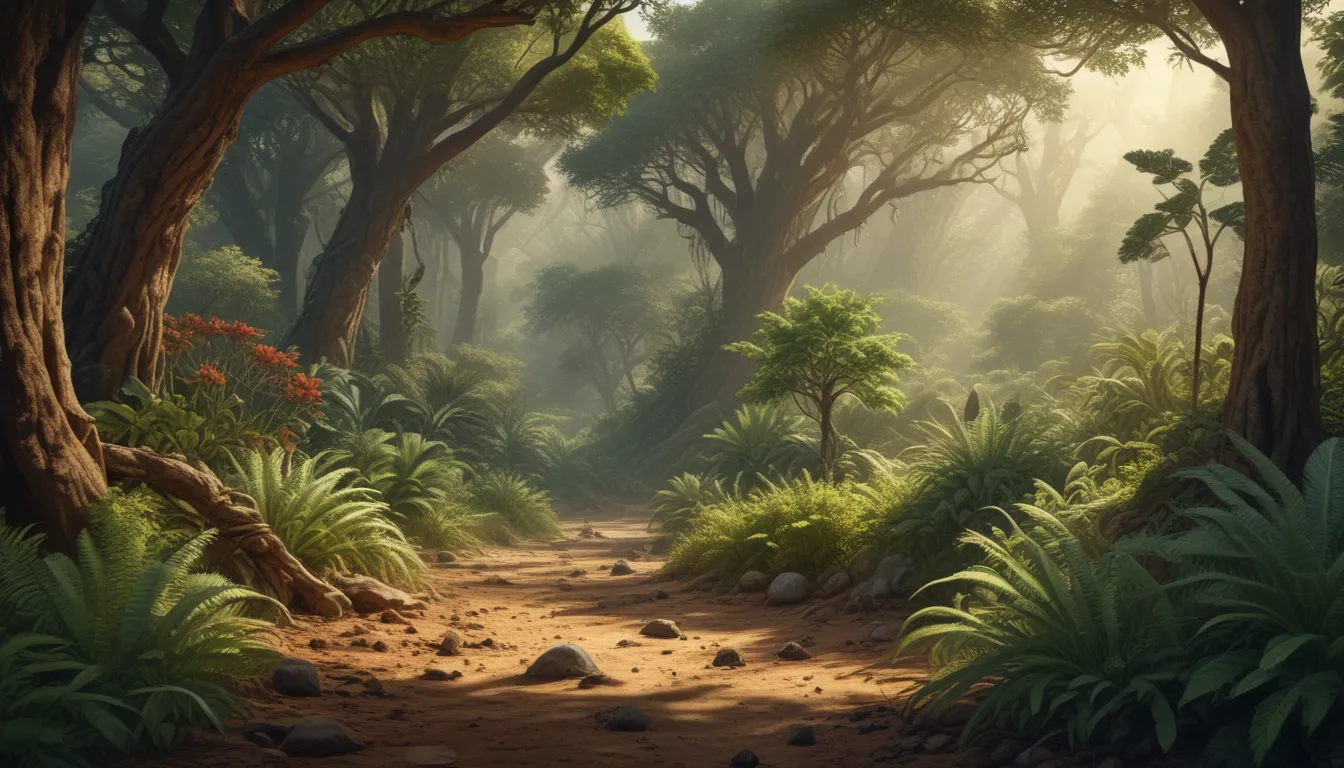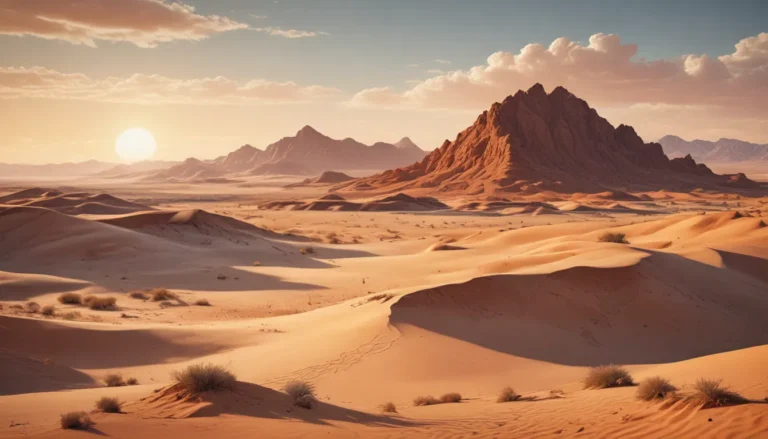A Note About Images: The images used in our articles are for illustration purposes only and may not exactly match the content. They are meant to engage readers, but the text should be relied upon for accurate information.
Are you fascinated by the resilience and adaptability of plants thriving in some of the most extreme environments on Earth? If so, xerophytic vegetation, also known as drought-resistant plants, may pique your interest. These remarkable plant species have evolved unique strategies to survive in arid and dry regions where water is scarce. From storing water within their tissues to withstanding scorching temperatures, xerophytic plants have captivated scientists and nature enthusiasts alike.
Exploring the World of Xerophytic Vegetation
Let’s embark on a journey into the captivating world of xerophytic vegetation and uncover 20 intriguing facts about these extraordinary plants. As we delve deeper into their adaptations and survival mechanisms, you will gain a deeper appreciation for the ingenuity and beauty of xerophytes.
Understanding Xerophytic Adaptations
-
Adaptation to Arid Environments: Xerophytes, or desert plants, have evolved specialized adaptations to thrive in dry and arid regions where water is scarce.
-
Water Conservation Strategies: Xerophytic plants exhibit unique structures such as reduced leaves, thick waxy coatings, and extensive root systems that help them conserve water effectively.
-
Global Distribution: From the iconic cacti of North American deserts to the resilient succulents of African savannahs, xerophytic vegetation can be found in diverse ecosystems around the world.
Survival in Harsh Conditions
-
Water Storage: Xerophytes can survive long periods without water by storing water within their tissues, allowing them to endure droughts and extreme climatic conditions.
-
Heat Tolerance: Many xerophytic plants have adapted to high temperatures by developing structures like spines and hairy leaves that minimize water loss and provide shade from intense sunlight.
-
Unique Reproductive Strategies: Certain xerophytic plants rely on nocturnal pollination or have fruits and seeds that are resistant to desiccation, ensuring successful reproduction in harsh environments.
Resilience and Biodiversity
-
Rapid Recovery: Xerophytic vegetation is highly resilient, capable of recovering quickly after periods of drought or disturbances and continuing to thrive in challenging environments.
-
Medicinal Properties: Some desert plants possess medicinal properties and have been used in traditional medicine for centuries, offering remedies for various ailments.
-
Importance in Ecosystems: Xerophytic plants play a crucial role in desert ecosystems, providing habitat and food sources for a wide range of desert-adapted animals and helping stabilize fragile desert soils.
Cultural Significance and Longevity
-
Anatomical Diversity: Xerophytes boast fascinating anatomical characteristics, from the water-storing tissues of succulents to the deep taproots of desert shrubs, showcasing their remarkable adaptations.
-
Symbiotic Relationships: Certain xerophytic plants form symbiotic relationships with fungi or bacteria, enabling them to access essential nutrients for survival.
-
Spiritual Significance: In many desert regions, xerophytic plants hold cultural and spiritual importance, playing a pivotal role in traditions and rituals.
Insights and Challenges
-
Longevity: Some xerophytes can live for centuries, defying the harsh conditions of their environment and adding to the biodiversity of desert regions.
-
Biodiversity: Xerophytic vegetation is an important source of biodiversity, contributing to the overall diversity of the planet’s ecosystems.
-
Climate Change: Climate change poses challenges to xerophytic vegetation as shifting climate patterns threaten desert ecosystems and their unique plant life.
Inspiration and Exploration
-
Artistic Influence: The striking forms and resilience of xerophytic plants have inspired art, architecture, and design, showcasing the beauty and adaptability of these desert dwellers.
-
Scientific Insights: Studying xerophytic vegetation offers valuable insights into plant adaptation and resilience, providing crucial knowledge for understanding how plants thrive in extreme environments.
-
Economic Importance: Certain xerophytic plants have economic significance, being used for commercial purposes such as dyes, fibers, and cosmetics.
Embracing the Wonder of Xerophytic Plants
In conclusion, xerophytic vegetation is a testament to the remarkable adaptability of plants in facing challenging environmental conditions. These desert dwellers have fine-tuned their survival strategies, from water storage mechanisms to heat tolerance, to thrive in arid landscapes. By studying xerophytic vegetation, we not only gain a deeper understanding of plant resilience but also appreciate the intricate balance of desert ecosystems.
Frequently Asked Questions (FAQs)
-
What is xerophytic vegetation?: Xerophytic vegetation refers to plants adapted to survive in dry and arid environments with limited water availability, showcasing unique physiological and morphological adaptations.
-
Where can xerophytic vegetation be found?: Xerophytic vegetation can be found in deserts, arid grasslands, and coastal dunes worldwide, with notable regions including the Sonoran Desert, Sahara Desert, and Atacama Desert.
-
What are common adaptations of xerophytic plants?: Xerophytic plants employ adaptations such as deep root systems, waxy coatings on leaves, and succulent tissues to cope with water scarcity and harsh conditions.
-
How do xerophytic plants conserve water?: Xerophytic plants conserve water by closing stomata, reducing leaf surface area, and storing water in specialized structures like stems and roots.
-
What is the importance of xerophytic vegetation?: Xerophytic vegetation plays a vital role in stabilizing desert ecosystems, preventing soil erosion, and providing habitats and food sources for desert-adapted animals.
Join Us in Exploring the Wonders of Xerophytic Vegetation
Our commitment to providing accurate and engaging content ensures a rich and rewarding learning experience for all. Each fact shared about xerophytic vegetation is a result of contributions from real users like you, reflecting diverse insights and knowledge. Trust in our dedication to quality and authenticity as we continue to explore the fascinating world of xerophytic plants together.






